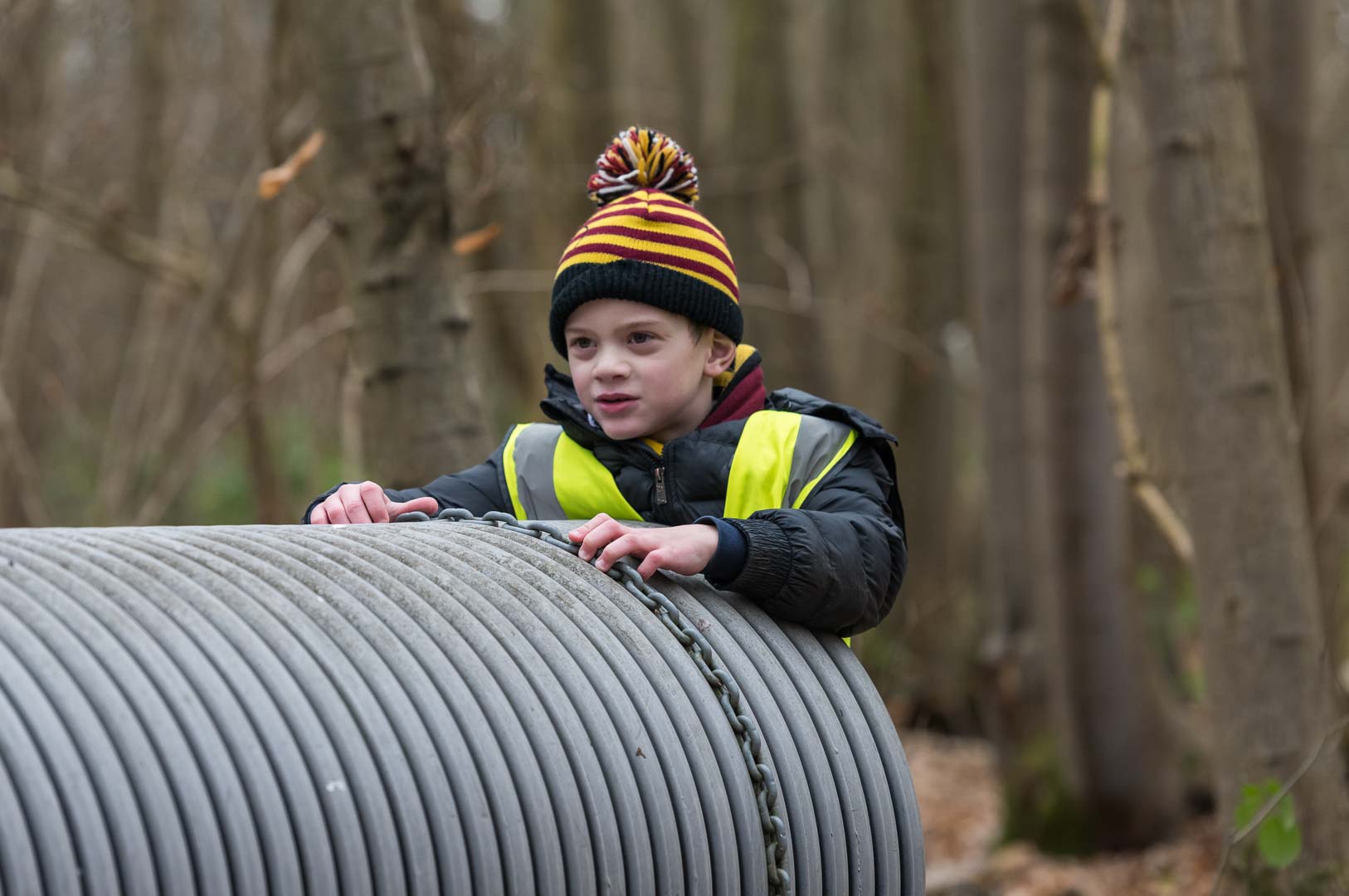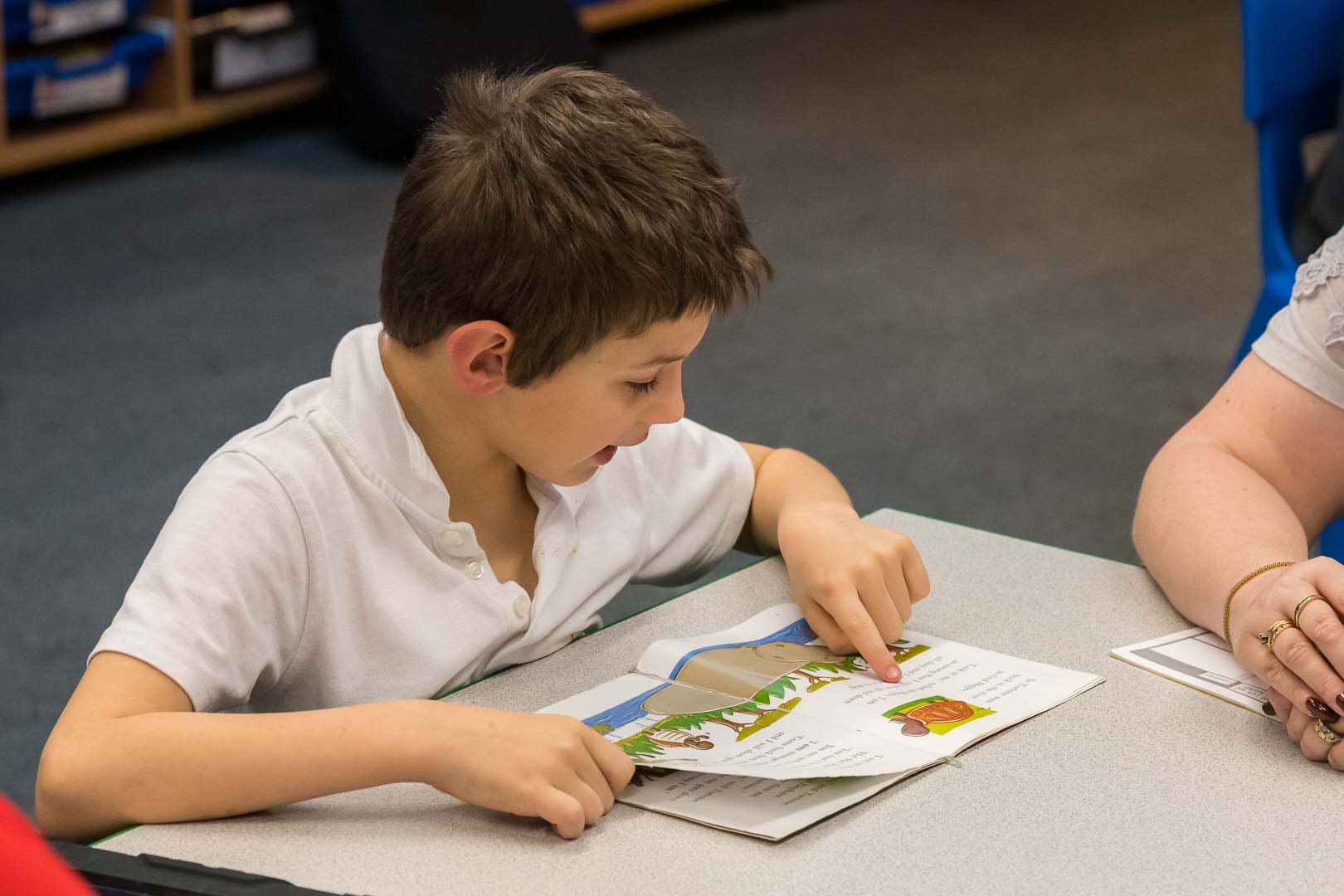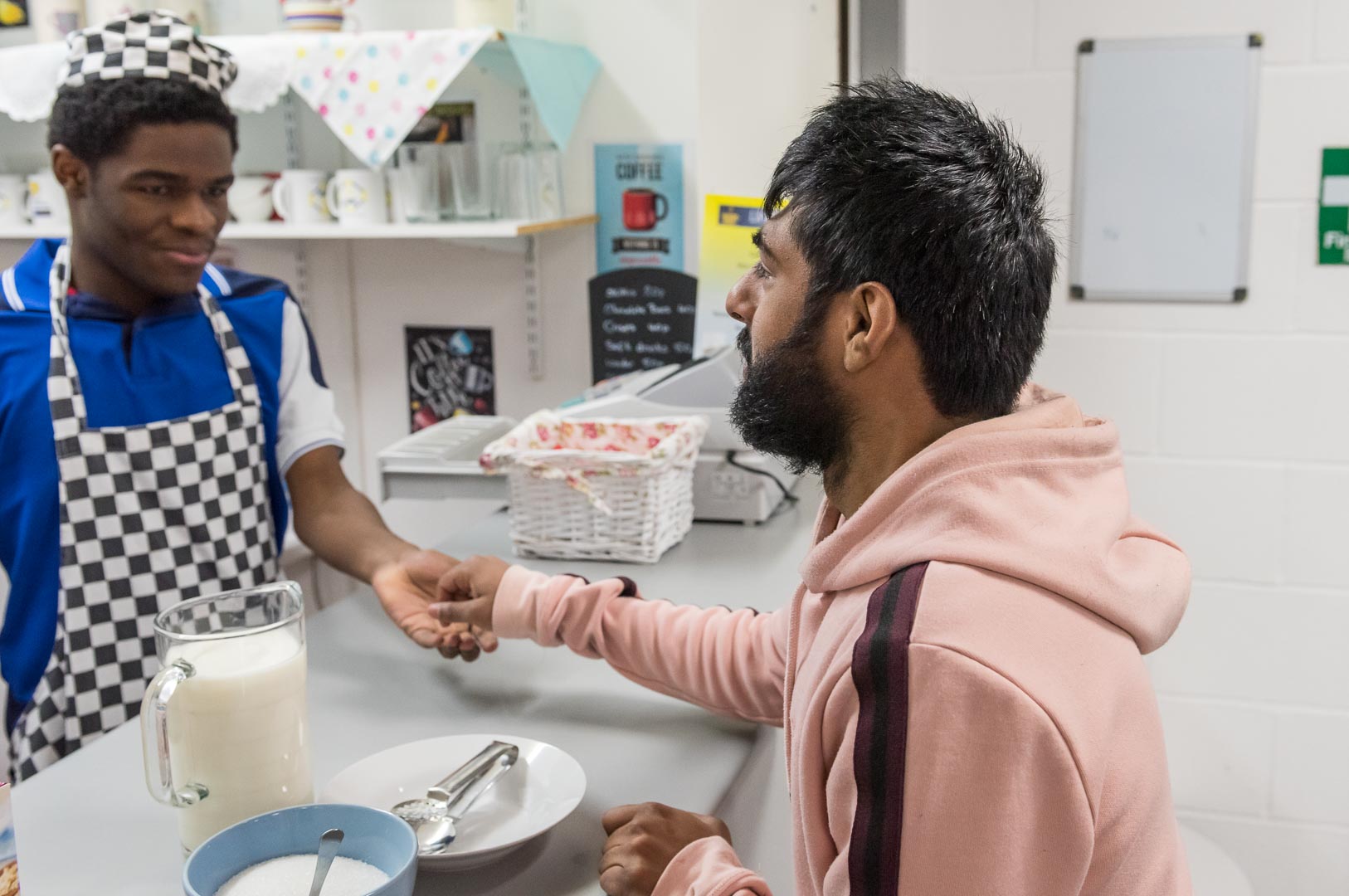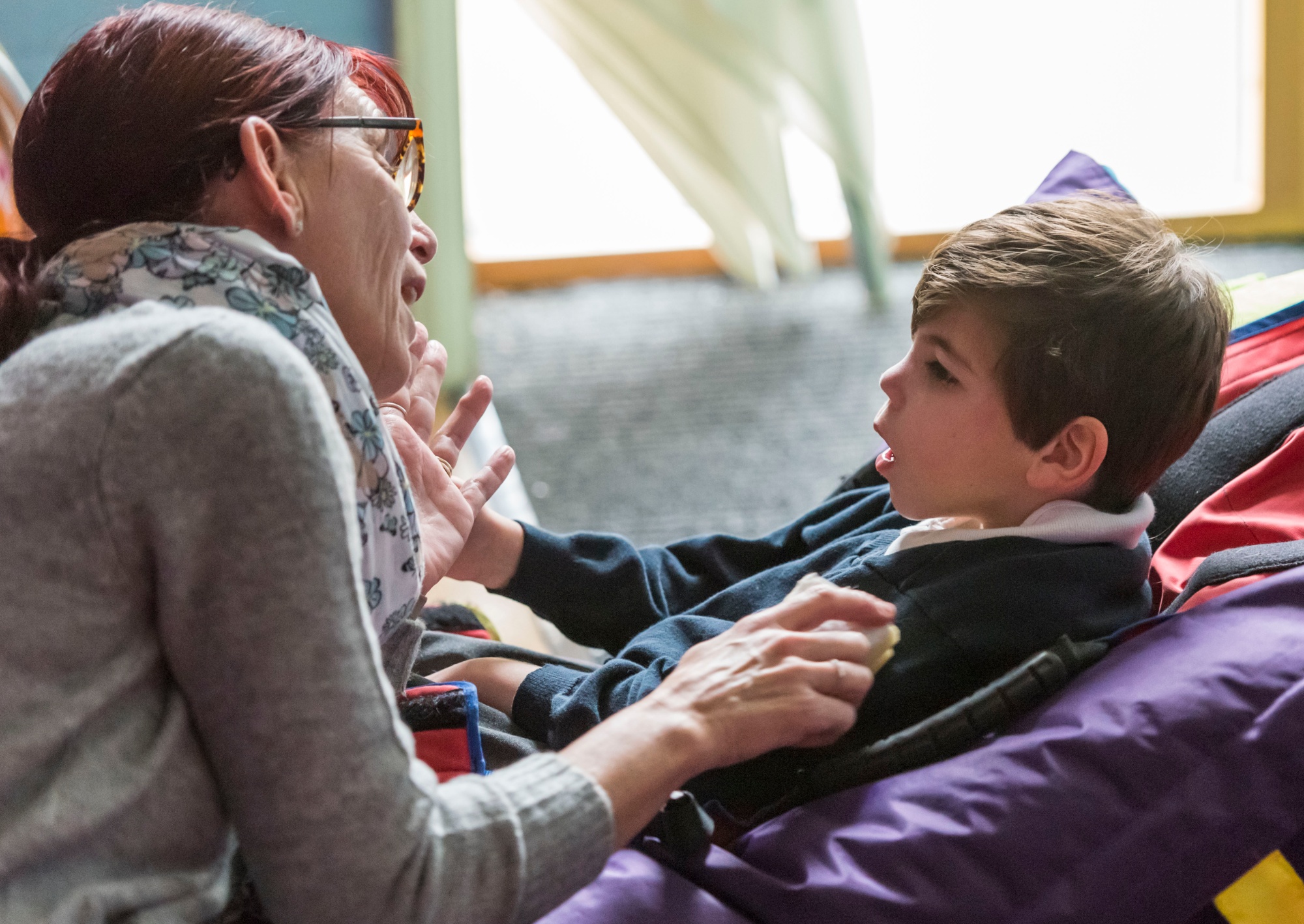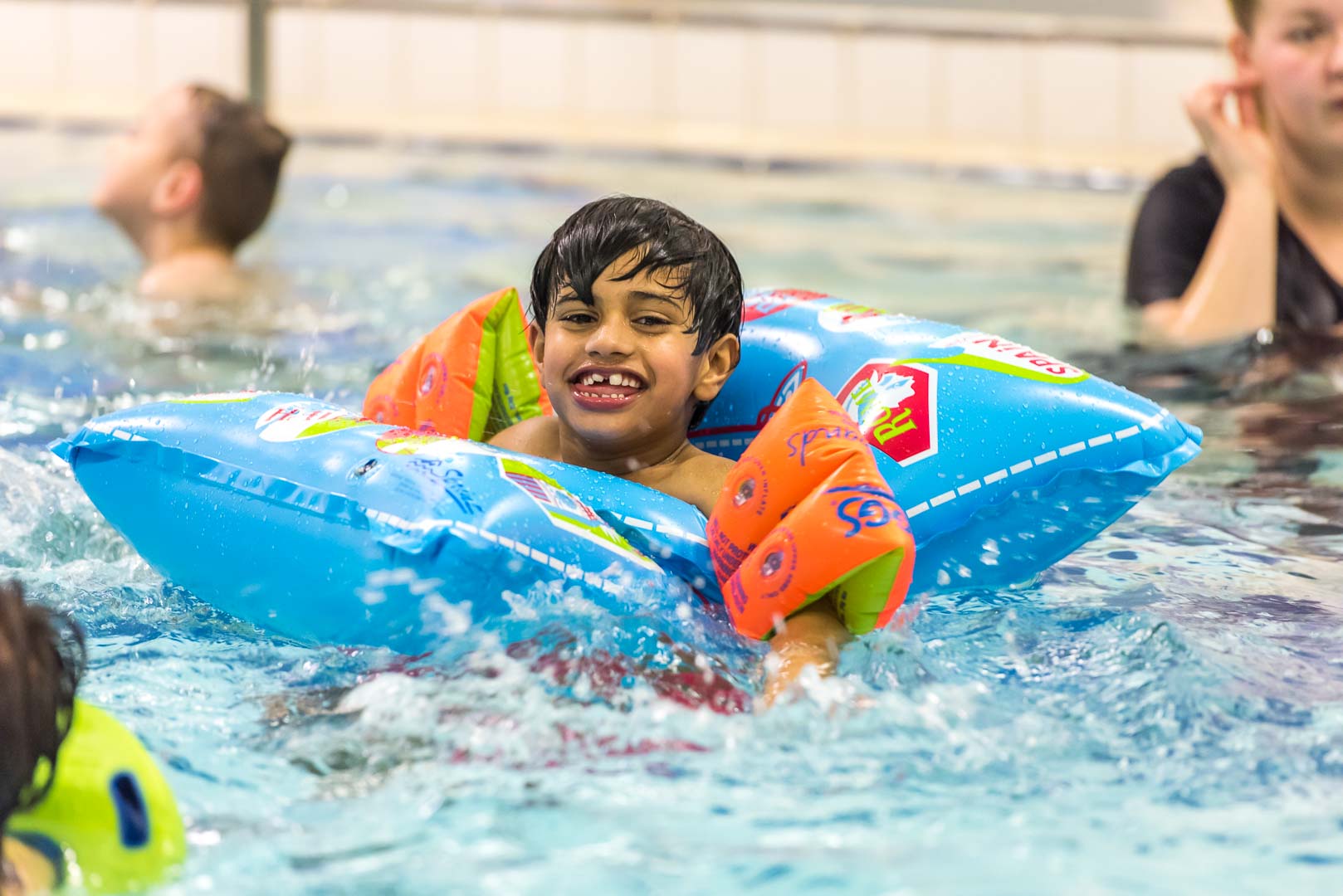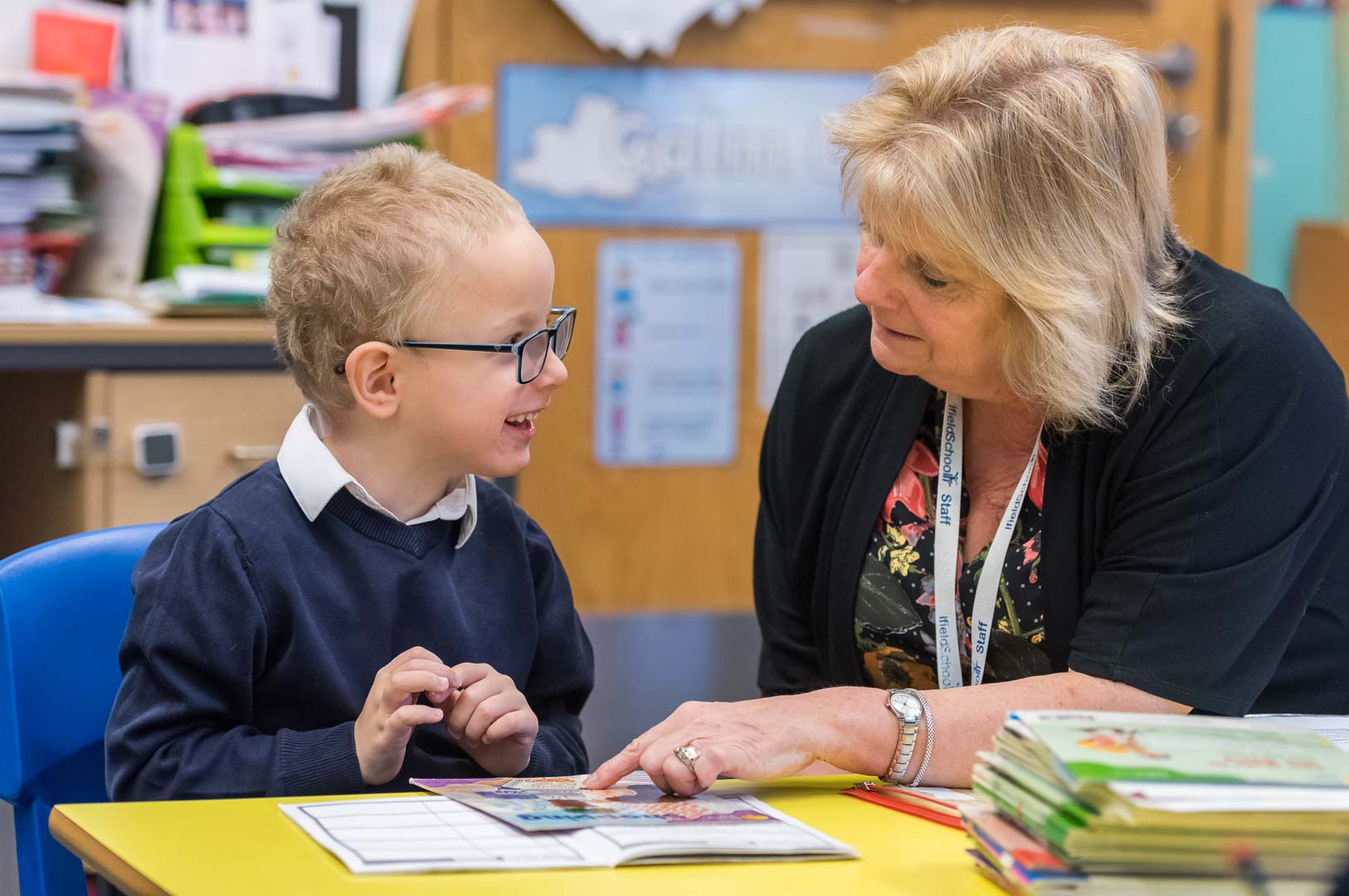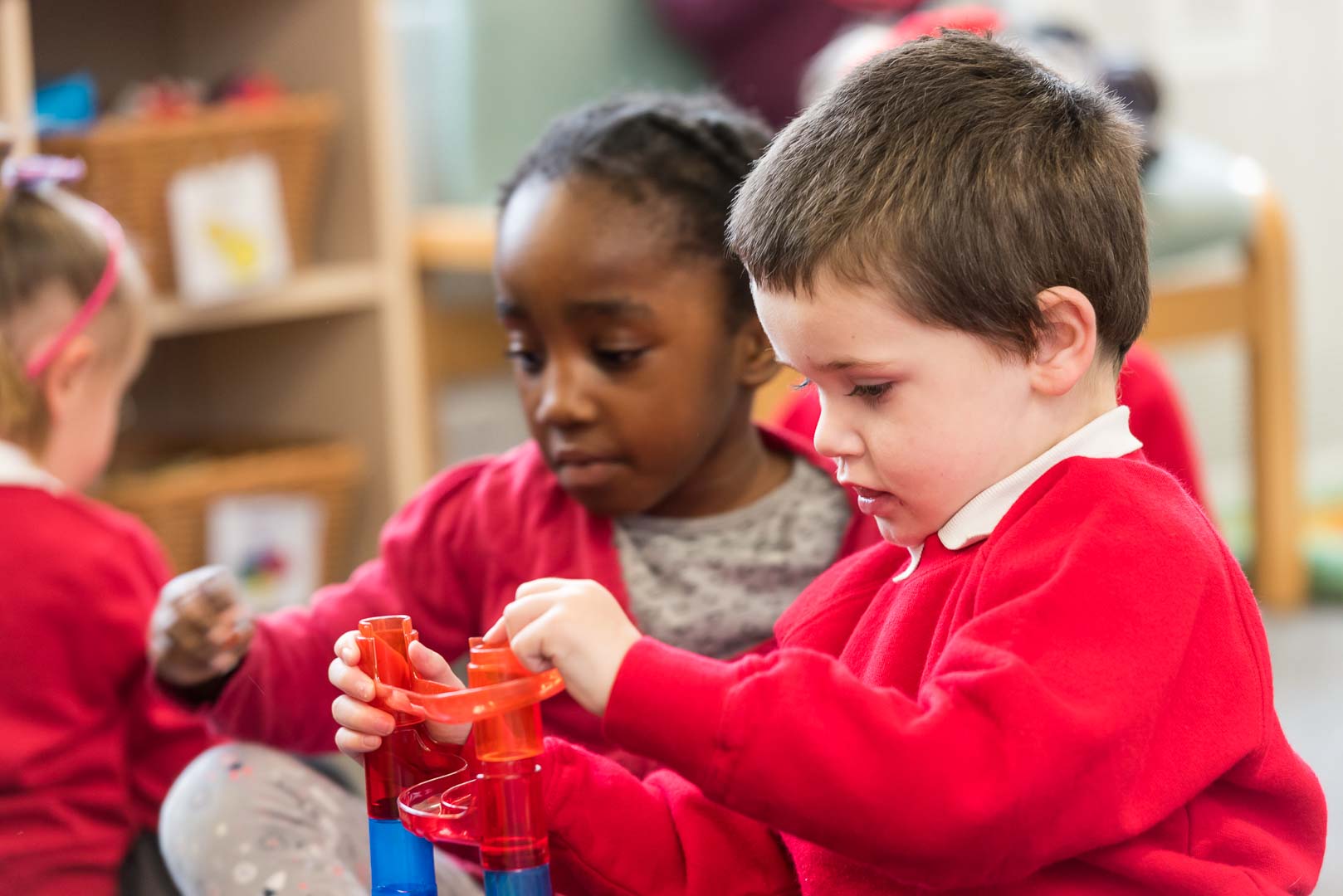Home Learning Tasks
Hazel, Maple, Oak and Cherry
Week beginning 11th May 2020
Below are some suggestions for home learning activities. Where possible the resources have been provided. We fully understand that you may not have all the resources at home to carry out every task.
Internet Safety
Please make sure your children are supervised when using the internet. The sources below have been checked internally at school. Please check them again before sharing with you children to ensure that your internet settings are blocking any undesirable content.
|
ENGLISH - READING |
|
We are learning to sequence events in books.
This week we’d like you to recap the story of Jack and the Beanstalk. There is a copy of it available on the website along with a variety of activity sheets to complete. If your child is not yet ready to listen to a whole story but enjoys music and watching cartoons, try the song version on YouTube by Debbie and Friends: https://www.youtube.com/watch?v=pf9cVnfyhjM
This week we’d like you to sequence the key events of Jack and the Beanstalk (on leaves of the beanstalk to if you wish.) Discuss with your child and consider the possible variations to the story at each point such as ‘What would happen to the beanstalk if it didn’t rain for days? What if different seeds had been used? What if the giant had been friendly? What else could have been at the top of the beanstalk?’
Note Use large paper leaves to write the key events in the story. Stick the sequenced leaves on a beanstalk and display temporarily in the house.
Activities:
Beginner-As the Adult look at the sequence pictures with your child and talk about them. From a choice of two can they order the pictures- start with first, then last then look at the ones in between?
Easy- Sequence the pictures with a little support- cut and stick the pictures with the correct text (adult to read and verbal prompt). Then discuss the answer to the questions above about possible variations. Remember that questions can also be answered by pointing/touching or looking at the correct answer from two option
Medium – Sequence the pictures (A4 - 4 to a page version) with as much independence as possible. Then discuss the answer to the questions above, about possible variations.
Harder – Independently sequence the pictures and discuss if there are any other pictures that could go in between these pictures? Your child could draw or write one of these.
Challenge Ask your child to tell you what would happen if these pictures were not in the right order? Can they sequence to you any of their favourite stories from home? Also, please check out the other activities in Home Learning and you if have made the most of Twinkl’s free access for parents and carers have a go at the online interactive Jack and the Beanstalk activity by clicking the link below. https://www.twinkl.co.uk/go/resource/jack-and-the-beanstalk-interactive-word-search-tg-3
Please also continue to share books from home with your child. Also encourage them to look at words on packaging and on TV to help them be aware of the different uses for writing. Read street signs together if you are able to go out together for your daily exercise walk.
Remember, Oxford Owl website eBooks to see which ORT level your child can access. They/you should know which level they usually read at school.
|
|
ENGLISH - WRITING |
|
We are learning to dictate or write captions for pictures
This week we would like you to use pictures from other versions of Jack and the Beanstalk or related but different to the story as a starting point. Please encourage your child to write three true sentences about a picture. They could say the words and you write them down (scribe) or you can cut out a single picture put it on a piece of paper and see if they can try and write something relating to the picture underneath. They could even draw their own pictures.
Challenge With support children can edit and re-write their sentences after feedback has been given from you. How could we make it better? Capital letters in the right place, add adjectives, make sure you have a full stop at the end of the sentence.
Activity Beginner – have a picture that they can write beneath Easy- as above but also encourage them to compose a sentence about the picture and you scribe for them – you could encourage them to think what the initial letter is of different words in the sentence. Harder-have 3 pictures that they write a sentence beneath independently.
Once finished, please help your child to keep their work safe and please send your wonderful work into school for your teacher to read and share with the pupils in school once we are back.
|
|
PHONICS |
|
We are learning how to hear sounds in words
Please continue working on letter sounds at home, some new links are included below:
Phase 1 – more listening to sounds in the environment https://www.youtube.com/watch?v=n1m4h79JZso
Phase 2 phonics – animations to help learn phase 2 sounds https://www.bbc.co.uk/bitesize/topics/zcqqtfr
Phase 3 Phonics – work your way through the phase 3 sounds and don’t forget the ‘tricky words’. https://www.bbc.co.uk/bitesize/topics/zvq9bdm
Activity: Beginner- collect or make some noisy items (e.g. rattle, shaker made of dry rice/pasta in a cup covered with cling film, two spoons with a rubber band to hold them together, pet’s squeaky toy etc) and demonstrate the sounds they make. Hide them under a cloth and select one to make a noise with. Pull the cloth off. Can your child pick up the correct item for the sound they heard?
Challenge Can you clap a rhythm that they copy? Can they make a clap rhythm that you try to copy?
Medium-harder: letter sound what’s in the bag/bucket – write down 2 lists of the same sounds at your child’s current level and cut them up into individual sounds and put one set in the bag or bucket and one set face up on the table. Sing the song they know from school “ What’s in the bucket can we see , are you ready 1,2,3?” Then pull out a sound and see what one it matches to. Make sure you are saying the sound correctly and your child tries to say it correctly- Example “ ch” as in chips. Make it even more motivating by saying to your child “ you win ! ” ( turn it into a game) |
|
HANDWRITING |
|
We are learning to form letters correctly
Keep encouraging your child to hold the pencil in a pincer grip, using a short ‘chubby’ pencil or marker is a good way to encourage this. Don’t forget that it’s much easier to use a marker than a pencil and easiest of all is a whiteboard and marker as not much pressure is required.
Don’t forget that mark-making can be encouraged in all sorts of exciting ways – fingers in shaving foam, brushes in trays of sand, chunky chalk on the driveway, large paintbrush and bucket of water outside on the concrete on a sunny day, paint pens on the window… get creative!
Some new handwriting activities have been added to the Home Learning. Please encourage your child to complete the sheets. (See handwriting folder)
Activities
Beginner – Tracing lines and circles, start big and decrease size once ready Easier- Practice sitting letters and words on the line, remember not to lift your pencil when writing the letters: a, b, h, m and n Harder – Writing words with letter tails hanging beneath the line for g, j, p, q and y Challenge- Cursive writing introduction |
|
MATHS |
|
We are gaining an understanding of place value
This week we would like you to continue to support your child in learning about place value at home. If they are not yet ready, continue to working on understanding that numbers represent a physical amount.
If you happen to have paper straws at home you can use them to make into a resource for teaching place value. Cut one straw into 10 equal sized pieces to be your ‘ones’. Use a pen to draw evenly spaced rings around straws to show they are the equivalent of ten ones. Call them your ‘tens’. Glue ten tens straws together to make a ‘hundred’. Use your paper straw ‘dienes’ to demonstrate how many tens and ones a number has.
Beginner – Using cards with a number of objects and a choice of numbers below count the objects with your child and place a clothes peg or a counter on the correct number (pictures with choice of numbers in maths folder)
Easy- 1. Count out a number of objects and match it to the digit card. You can use the resource (pictures and numbers in maths folder) if you need to but it usually better to use real objects from around the house like socks, shoes, buttons, 1p’s. 2. We are learning to show amounts beyond 10 using apparatus- using ordering to 20 sheet (maths folder) make the numbers using practical resources (pennies, buttons, bits of pasta) then decide from doing this what number goes where – cut out and stick in the right place.
Harder - We are continuing to learn to partition numbers into tens and ones- see Term 5 week 3 worksheets.
Challenge- We are continuing to learn to partition three-digit numbers into hundreds, tens and ones – see Term 5 week 3 worksheets.
Questions about place value- How many tens are there in the number 23? 2 How many tens are there in the number 16? 1
How many ones or units are there in the number 12? 2 How many ones or units are the in the number 29? 9 Try asking your child more questions like this. |
|
SCIENCE |
|
We are learning to observe and describe how seeds and bulbs grow into mature plants.
If you can get hold of some fast-growing sunflower or runner bean seeds plant them in pots inside ready to plant outside or straight into weed free soil or a large plant pot outside (you may need canes once sprouted.) Predict their final height and measure over a period of time recording height on a chart.
Note Sunflowers should be planted in full sun, 5 cm apart. Once fully grown and ready to harvest, you can collect the seeds by gently wiping across the flower head with a clean cloth. Seeds can be dried and planted for the following year.
Activity Watch a Power-point about sunflowers growing. Then watch a video clip of the seed growing in a tin can on the window sill and then discuss together some of the words you might say about them growing. (Science folder in Term 5 week 4 home learning)
See worksheet on the lifecycle of a sunflower- cut out the pictures and stick into the right place- discuss as you go using Scientific language.
Challenge Can you explain in scientific language how water gets to the flowers?
Take photographs as your plants grow each week. You can share these at school when you come back. |
|
GEOGRAPHY |
|
We are looking at countries that have plants that are the same and plants that are different.
This week we would like you to find out about plants and flowers that grow in a contrasting location such as the Brazilian rainforest. Use books, video and pictures to gather information about different types of plants and flowers including how the climate affects how and where plants grow. Locate the rainforests on a world map, particularly in relation to the Equator.
Activity Watch the Power Point in the Geography folder and discuss with your child where these places are in the world and because the climates are different the things that grow there will be different. Some countries are much hotter than others and some countries have a lot more rainfall than others. Print out the world map colour or black and white one and print and cut out the pictures of different plants and flowers from the power point and stick them onto the correct continent.
Challenge 1.Try drawing 2 different plants from contrasting places and write the name of it underneath. 2.Label the different continents (Geography folder Term 5 week 4)
ICT- please use laptops or iPads to research flowers and plants from other countries as well as the UK- ask an adult to help you cut and paste some images into a word document and label it using text making sure you use upper and lower case letters correctly.
|
|
PHSE- continue |
|
We are learning to share and take turns This week we would like you to continue to help develop your child’s ability to wait, and allow others to have a turn of doing something they want to do themselves without interfering. These skills can be very hard for some children so please give them lots of praise for good waiting. If your child is at an early level of communication, please use their names followed by ‘turn’ to help them understand expectations for example, ‘Harry’s turn’, ‘Mum’s turn’.
Activity Beginner- my turn, your turn with one adult for a simple activity such as holding a sensory toy, popping bubbles, choosing a small piece of fruit off a plate to eat during afternoon tea. Easy- as above but with three or more people, including a sibling. Gradually begin to extend how long they need to wait. Medium – take turns during a simple board game using dice. If you’d like to make your own there are some templates saved in last week’s PHSE folder Harder – as above, with one of the more complicated games. Also, introduce using a timer at home as encourage your child to watch the timer and not ask for what they want until the timer is done. |
|
FOOD TECH |
|
We are learning to put things in the right place
This week we are looking at decorating a plain biscuit to look like a garden. Make one up first so your child can copy it and see where to put things on the biscuit. Activity Add sticky icing (icing sugar mixed with water in a bowl – you can add green food colouring to make it look like grass) to a digestive biscuit, crushed bourbon biscuits for soil, a sour worm sweet for a worm and wafer/sweet flower or draw it on with a coloured icing pen. Can you add green sweet shoelaces to look like a shrub? Assess each other’s biscuits before eating them- is everything in the right place? Challenge How can you make it a different type of garden? Can you make it higher up? Can you make it have different plants or flowers? Can you make a biscuit look like a bug? |
|
ART |
|
We are learning to use a range of materials creatively to design and make products.
Today we are going to use soft wire or willow (soft) sticks (even try paper straws) to recreate large leaves and flower petals, laying different coloured tissue paper over the frame. Finally, coat with liquid pva glue which dries to a nice shiny finish. Tear, cut, stick and layer tissue paper to create interesting and colourful effects. Children can practice their tearing and cutting skills as well as glueing techniques. Don’t forget to cover the table with newspaper first!
Please help your child develop their scissor skills at home this week. Begin by cutting straight lines, move on to cutting out simple shapes and then try the ultimate cutting challenge- a continuous curve!.
Activity To create a plant/flower with stalk/ beanstalk using a variety of techniques.
|
|
LIFE SKILLS |
|
We are learning how to use tools safely This week we would like you to show the children a variety of real garden tools and how you use them safely. Encourage your child to help out in the garden with the tools planting flowers, seeds other plants using gardening gloves, a trowel and hand fork – following the rules of tool safety. If garden area is not available, do this indoors with a builder’s tray of potting mix or improvise with sand, plastic plants and bucket & spade.
As our current unit theme is ‘The Scented Garden’, it would be great if you could teach the purpose of different gardening tools. You can find some sentence strips with symbols on the school website. After going through these together complete the ‘My Book of Gardening Tools’ activity, remembering the purpose of the tools.
Activities Look at and share ‘My book of gardening tools’, see if you can match some of the tools to the jobs using the sentence strips (life skills folder on website)
Help out in the garden with an adult explaining how to be safe with the garden tool explaining that some tools children shouldn’t use at all as they are sharp they need to wait until they are older.
|
|
RE |
|
We are learning about the features and practices of a Buddhist temple
This week we are looking at a different place of worship. First discuss with your child that there are different religions in the world and in this country and that they go to different places to worship. Look together at the Twinkl power point (places of worship-Buddhist temple KS1) Share symbol flashcards showing the rules of visiting the shrine room of a Buddhist temple (these are shown on the second to last slide entitled ‘showing respect’. Imagine we are visiting a shrine and wanting to show respect, act out the rules shown by the symbols.
Recently we have learnt about two other places of worship – the church and the mosque and the synagogue. Can your child remember which religions worship in these special buildings?
Activity Ask your child if they know what a Buddhist temple is and explain that it is similar to a church and a mosque because it is a ‘place of worship’ for people of the Buddhist faith. Recap the Buddhist temple Twinkl PowerPoint and discuss.
Look at the website below for more information. https://www.bbc.co.uk/bitesize/topics/zh4mrj6/articles/zdbvjhv
For beginner levels cut the label out and stick it on the right place with support from an adult. Medium and harder levels - Places of worship- Buddhist temple worksheet- match the vocabulary/labels to the picture in the temple- write the labels in.
Challenge Now complete the activity sheet – ‘Places of worship’ to show understanding of the religions studied so far. |
|
PE |
|
We are keeping physically active during lockdown and exercising once a day
Both Large Motor Skills idea cards and Fine Motor skills idea cards for indoors resources are available to use, also check out the links below.
https://www.youtube.com/watch?v=r2tBH_XyeJc finger exercises YouTube video to copy.
Past week’s Cosmic Yoga adventure were Betsy the Banana and Arnold the Ant! This week it is Squish the fish.
https://www.youtube.com/watch?v=LhYtcadR9nw
If your child is finding the yoga too easy or appreciates things targeting at a higher age group, we dare them to try the Kids Ninja Balance Workout challenge! Come on mums and dads and carers, you need to get involved too! https://www.youtube.com/watch?v=-VNqE8tV2GE
Also remember that Joe Wicks is still running his live daily online workouts at 9am https://www.youtube.com/channel/UCAxW1XT0iEJo0TYlRfn6rYQ
|
|
SENSORY |
|
We are learning to explore and tolerate smells, textures and dirt in the garden
Is your child able to tolerate wearing gardening gloves, are they overly weary of getting dirty or do they enjoy dirt a little too much? Encourage them to try on your gardening gloves and help out with some planting or weeding.
If your child is afraid of dirt, encourage then to be brave and stir soil with a stick, letting them watch you first so they know it’s safe. Add a little water to dry soil, does it smell and look different when it is wet and dry? Does grass smell different when you cut it? What other smelly plants are in the garden? Encourage your child to explore, feel and sniff but please stay close by to ensure they don’t come across any prickly plants or nettles and there may also be insects about.
This week find some utensils in the kitchen that they could explore like a sieve, colanders, plastic jugs, different size saucepans that they can explore putting water and soil into.
If the weather is fine, put on your swimsuits and enjoy watering each other with the hose or running through the sprinkler. Does your child prefer a soft, fine mist of water or a firm squirt? Don’t forget to remind your child to wash their hands after investigating in the garden.
|
Useful Websites (May 2020)
Currently Busy Things are charging £1.00 per month for subscription during the school closures. This website has learning activities and games for the age range 3-10 and can be found here: https://www.busythings.co.uk/
Oxford Owls has a range of ebooks that are levelled according to reading ability. Some of which have activities linked to them for comprehension.
Phonics Play is free to use at the moment and has a range of games. To access for free, use the following details. User name: march20 Password: home
Remember that Twinkl has a range of printable resources and PowerPoint teaching aids to access free at the moment.
ICT games.com is great for literacy and maths-based activities/games.

